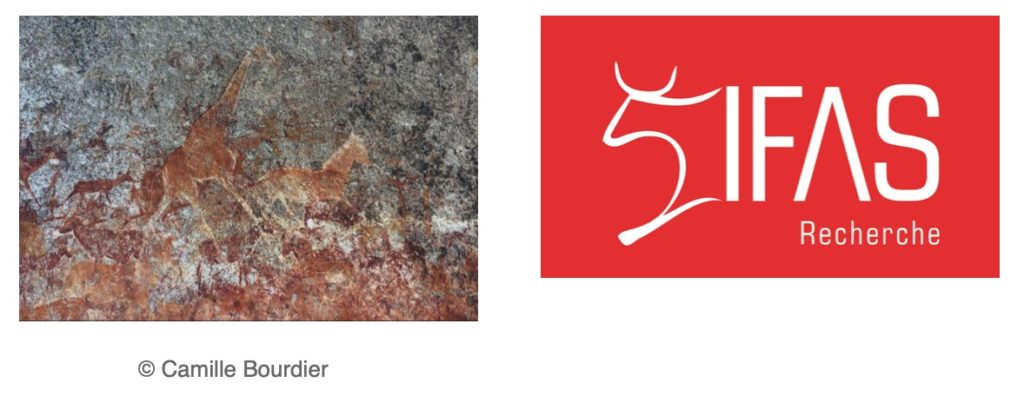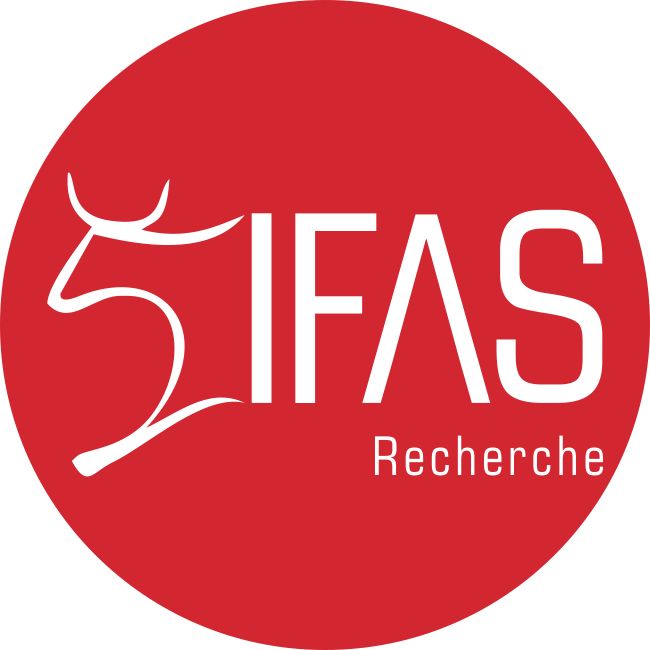Petite histoire du Logo de l’IFAS-Recherche/ A Short History of IFAS-Research’s Logo

Le saviez-vous ? Le logo de l’IFAS-Recherche représente un taureau inspiré d’une des célèbres peintures rupestres que les chasseurs-cueilleurs San ont réalisées en Afrique australe. Les San, considérés comme les premiers habitants de la région, ont créé durant quatre mille ans des dizaines de milliers de gravures et peintures rupestres.
C’est le cas, entre autres exemples, dans le parc national du Maloti-Drakensberg, classé en 2000 au patrimoine mondial de l’UNESCO pour ses paysages naturels exceptionnels, mais aussi pour l’exceptionnelle richesse de l’art rupestre qu’il abrite dans près de 690 sites.
Présentes sur des rochers et dans des grottes, les peintures rupestres monochromes ou polychromes représentent tant des hommes que des animaux, des formes géométriques et des êtres hybrides. Elles témoignent des traditions et des croyances des groupes San.
Apprenez-en davantage sur les peintures San sur le site de l’African Rock Art Digital Archive et découvrez plus de 270 000 images numérisées :
Découvrez également deux partenaires scientifiques de l’IFAS-Recherche qui travaillent dans le domaine de l’art rupestre :
- Origins Center, qui renferme de magnifiques collections d’art rupestre.
- Le RARI (Rock Art Research Institute) et ses projets en Afrique australe.
Pour en savoir plus sur l’art des chasseurs-cueilleurs d’Afrique australe, parcourez le numéro 23 de la revue de l’IFAS-Recherche : Lesedi #23 « L’art rupestre des chasseurs-collecteurs ».
Did you know? The IFAS-Research logo represents a bull inspired by one of the famous rock paintings that San hunter-gatherers have made in Southern Africa. The San, considered to be the first inhabitants of the region, created tens of thousands of rock engravings and paintings over a period of four thousand years.
This is the case, among other examples, in the Maloti-Drakensberg National Park, classified in 2000 as a UNESCO World Heritage Site for its exceptional natural landscapes, but also for the exceptional richness of the rock art that it houses in nearly 690 sites.
Present on rocks and in caves, the monochrome or polychrome San rock paintings represent both men and animals, geometric forms and hybrid beings. They bear witness to the traditions and beliefs of the San communities.
Learn more about San rock art on the website of the African Rock Art Digital Archive and discover more than 270,000 digital images of San paintings and engravings:
Discover two scientific partners of IFAS-Research, who work in the field of rock art:
- Origins Center, which contains magnificent collections of rock art.
- RARI (Rock Art Research Institute) and its research projects in southern Africa.
To learn more about the art of the hunter-gatherers of southern Africa, browse the IFAS-Research magazine: Lesedi #23 “The rock art of the hunter-gatherers“.
